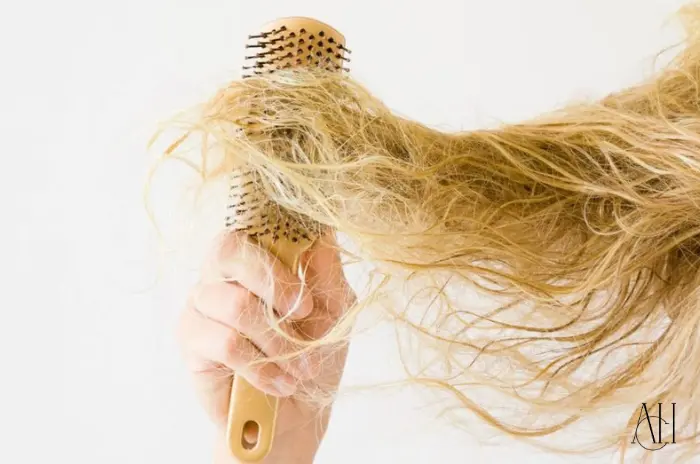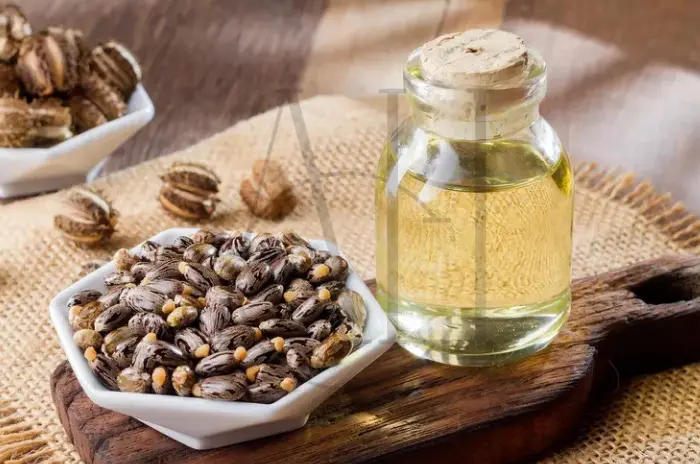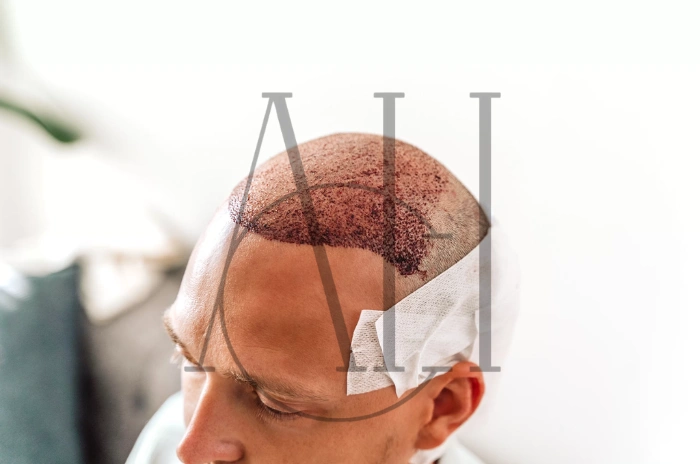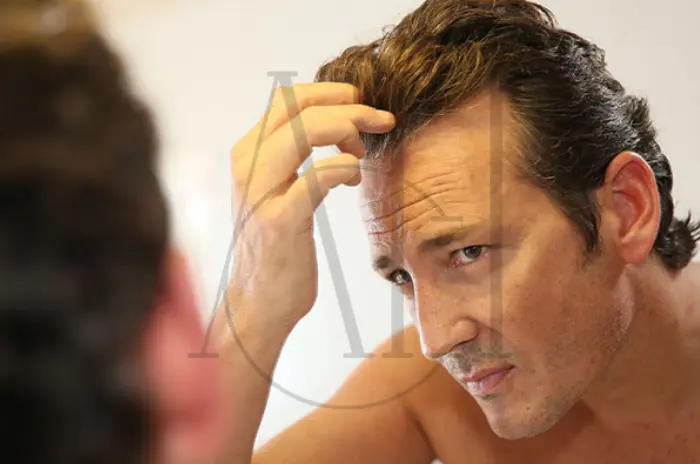Your hair care routine might be causing more harm than good. Many people unknowingly engage in damaging hair habits that lead to breakage, thinning, and dull-looking locks. Understanding how to prevent hair damage starts with identifying the common mistakes that sabotage your hair’s health and vitality.
Hair damage doesn’t happen overnight. It’s often the result of repeated poor choices in your daily routine. From brushing wet hair to using excessive heat, these seemingly innocent actions can accumulate over time, leading to significant hair loss and breakage. The good news is that most hair care mistakes are entirely preventable once you know what to look for. Protecting your hair requires more than just using expensive products. It demands a fundamental shift in how you approach your daily hair care habits. By learning to avoid damaging your hair through simple changes, you can maintain stronger, healthier strands that grow longer and look more vibrant.
Table of Contents
ToggleCommon Hair Care Habits That Cause Damage
1- Over-Brushing or Brushing Wet Hair
Brushing wet hair ranks among the most destructive hair care mistakes people make daily. When hair is wet, it becomes significantly more fragile and prone to breakage. The hair shaft swells with moisture, making it vulnerable to damage from even gentle brushing motions.
Wet hair can stretch up to 30% of its original length before breaking completely. This elasticity might seem beneficial, but it actually weakens the hair structure. Damaging hair habits like aggressive brushing when wet can cause immediate breakage and long-term damage to the hair cuticle.
The timing of brushing matters tremendously for hair breakage tips. Instead of brushing immediately after washing, allow your hair to air dry partially. Use a wide-tooth comb or detangling brush specifically designed for wet hair. Start from the ends and work your way up to the roots gradually.
Over-brushing dry hair can also contribute to hair damage. Excessive brushing strips away natural oils and creates friction that roughens the hair cuticle. This leads to frizz, split ends, and overall deterioration of hair quality over time.
2- Using High Heat on Hair Frequently
Heat styling tools represent one of the primary causes of hair damage in modern hair care routines. Regular use of blow dryers, flat irons, and curling wands at high temperatures literally cooks the hair shaft, breaking down the protein structure that gives hair its strength and elasticity.
Heat tool damage prevention starts with understanding that temperatures above 300°F can cause irreversible damage to hair fibers. Many styling tools reach temperatures of 400°F or higher, which can instantly damage the hair cuticle and create weak points along the shaft.
The frequency of heat exposure compounds the problem significantly. Daily heat styling without proper protection accelerates the damage process, leading to brittle, dry hair that breaks easily. This type of hair damage often appears as split ends, frizz, and loss of natural shine.
Professional stylists recommend limiting heat styling to 2-3 times per week maximum. When you must use heat tools, always apply a quality heat protectant product and use the lowest effective temperature setting for your hair type.
3- Wearing Tight Hairstyles Too Often
Tight hairstyles harm your hair through a condition called traction alopecia. This form of hair loss occurs when constant tension pulls on hair follicles, eventually weakening them to the point where they can no longer produce healthy hair strands.
Popular styles like tight ponytails, braids, and buns create concentrated stress points along the hairline and crown area. The constant pulling stretches the hair shaft and can damage the root structure permanently if practiced regularly over extended periods.
Hair care habits that involve tight styling tools like elastic bands and bobby pins can create additional stress points. These accessories often snag and break hair strands, particularly when removed carelessly or left in place for extended periods.
Rotating between different hairstyles and using softer hair ties can significantly reduce the risk of traction-related hair damage. Give your hair regular breaks from tight styling to allow the follicles to recover and maintain their natural strength.
4- Pulling Hair Back When Wet
Styling wet hair into tight ponytails or buns multiplies the damage potential exponentially. Wet hair’s increased fragility combined with tension from tight styling creates the perfect conditions for immediate and long-term hair breakage.
This practice is particularly problematic because wet hair doesn’t return to its natural state when dried under tension. The hair can develop permanent kinks, weak spots, and areas of thinning where the stress was concentrated during the drying process.
Shampooing mistakes often include the assumption that wet hair can handle the same styling techniques as dry hair. The reality is that wet hair requires much gentler handling and looser styling options to prevent damage.
If you must tie back wet hair, use soft scrunchies or fabric hair ties instead of elastic bands. Keep the style loose and remove it as soon as possible to minimize the time your hair spends under tension while wet.
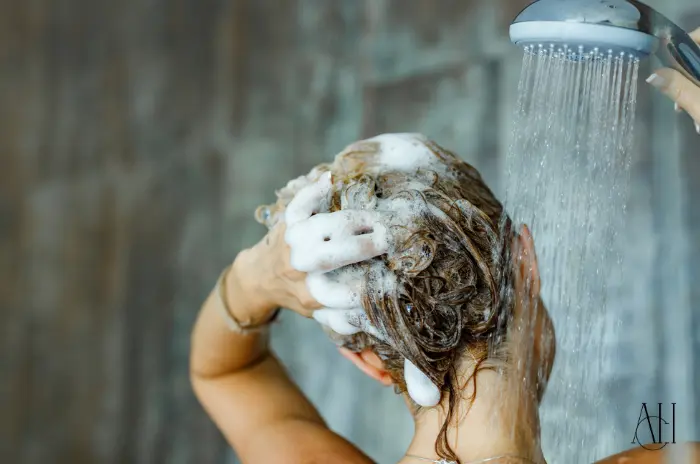
5- Shampooing Too Often or Incorrectly
Over-washing hair strips away natural oils that protect and nourish the hair shaft. Many people believe daily shampooing is necessary for clean hair, but this practice can actually contribute to dryness, irritation, and weakened hair structure over time.
The scalp produces sebum, a natural oil that conditions hair and protects it from environmental damage. Frequent washing removes this protective barrier faster than it can be replenished, leaving hair vulnerable to breakage and external stressors.
Shampooing mistakes also include using the wrong technique and products for your hair type. Harsh sulfate-based shampoos can be particularly damaging to color-treated or chemically processed hair, stripping away moisture and causing color fade.
Most hair types benefit from washing every 2-3 days rather than daily. Oily hair might require more frequent washing, while dry or chemically treated hair often needs less frequent cleansing to maintain optimal health and appearance.
6- Not Using Conditioner Regularly
Skipping conditioner represents a critical gap in hair care that can accelerate damage and prevent proper hair maintenance. Conditioner serves multiple essential functions, including smoothing the hair cuticle, adding moisture, and providing a protective barrier against environmental stressors.
Without regular conditioning, hair becomes more susceptible to tangling, which leads to increased breakage during brushing and styling. The hair cuticle remains raised and rough, creating friction between strands and making hair appear dull and lifeless.
Hair care habits that exclude proper conditioning often result in progressive damage that compounds over time. The hair becomes increasingly difficult to manage, requiring more aggressive styling techniques that create additional stress and breakage.
Quality conditioners contain ingredients that temporarily fill in microscopic gaps in damaged hair cuticles. This smoothing effect not only improves appearance but also provides real protection against future damage from styling and environmental factors.
7- Hot Water Showers & Scalp Damage
Hot water hair washing effects extend beyond immediate discomfort to long-term damage of both hair and scalp health. Extremely hot water strips away natural oils more aggressively than necessary, leaving hair dry and brittle while potentially irritating the scalp.
The scalp’s natural moisture barrier becomes compromised when exposed to excessive heat regularly. This can lead to flaking, itching, and an overproduction of oil as the scalp attempts to compensate for the constant stripping of natural moisture.
Hair damage from hot water manifests as increased porosity, where the hair shaft becomes overly porous and unable to retain moisture effectively. This creates a cycle where hair appears dry and damaged despite regular conditioning treatments.
Lukewarm water provides effective cleansing without the damaging effects of excessive heat. The slight temperature difference can significantly impact long-term hair health while still providing a comfortable washing experience.
8- Overusing Chemical Treatments or Coloring
Chemical hair treatments represent some of the most severe forms of intentional hair damage in pursuit of aesthetic goals. Frequent coloring, perming, relaxing, and bleaching break down the hair’s natural protein structure, creating permanent changes that weaken the hair shaft.
Chemical hair treatments risks include immediate damage like breakage and burns, as well as long-term effects such as permanent texture changes and increased susceptibility to environmental damage. The cumulative effect of multiple chemical processes can render hair extremely fragile and prone to breakage.
The timing between chemical treatments plays a crucial role in minimizing damage. Professional colorists recommend waiting at least 6-8 weeks between major chemical processes to allow hair to recover and rebuild its strength.
Harsh hair products used in conjunction with chemical treatments can compound the damage significantly. Many people unknowingly use products containing alcohol or sulfates that further strip and damage chemically processed hair.
9- Skipping Hair Trims for Too Long
Regular trims play a essential role in preventing split ends from traveling up the hair shaft and causing more extensive damage. Split ends causes include environmental damage, heat styling, and general wear, but the progression of splits can be controlled through consistent maintenance.
When split ends are left untreated, they continue splitting upward along the hair shaft, creating increasingly severe damage that eventually requires cutting off significant length to repair. This makes regular maintenance trims more cost-effective than waiting for major damage to occur.
Split ends treatment through trimming every 6-8 weeks helps maintain hair health and actually supports length retention by preventing the need for more dramatic cuts later. Many people avoid trims thinking they’ll lose length, but the opposite is often true.
Professional stylists can assess the extent of damage and recommend appropriate trimming schedules based on individual hair type, styling habits, and damage level. This personalized approach ensures optimal hair health maintenance.
10- Not Protecting Hair From the Sun
Sun damage to hair occurs through UV radiation that breaks down the hair’s protein structure and fades color, yet many people neglect to protect their hair despite diligently protecting their skin. Prolonged sun exposure can cause significant hair damage that mimics the effects of chemical processing.
UV rays penetrate the hair shaft and break down melanin, the pigment that gives hair its color. This process not only causes fading but also weakens the internal structure of the hair, making it more prone to breakage and dryness.
Protect hair from sun damage by using products containing UV filters, wearing protective headwear, or limiting exposure during peak sun hours. Hair sunscreens and leave-in conditioners with SPF provide practical protection for daily use.
The cumulative effects of sun exposure become more apparent over time, particularly in combination with other damaging hair habits. Chlorine from swimming pools can amplify sun damage, making protection even more critical during summer months.
Hair Damage Prevention Quick Reference Guide
| Hair Care Mistake | Damage Type | Prevention Method |
|---|---|---|
| Brushing wet hair | Breakage, split ends | Use wide-tooth comb, start from ends |
| Heat styling daily | Protein damage, dryness | Heat protectant, lower temps |
| Tight hairstyles | Traction alopecia, hair loss | Loose styles, soft hair ties |
| Over-washing hair | Oil stripping, dryness | Wash every 2-3 days |
| Skipping conditioner | Cuticle damage, tangles | Use conditioner after every wash |
| Hot water washing | Moisture loss, scalp irritation | Use lukewarm water |
| Chemical treatments | Structural damage, breakage | Space treatments 6-8 weeks apart |
| Avoiding trims | Split ends, length loss | Trim every 6-8 weeks |
| Sun damage exposure | Color fade, protein breakdown | UV protection products |
| Sleeping with wet hair | Fungal growth, breakage | Air dry before bed |
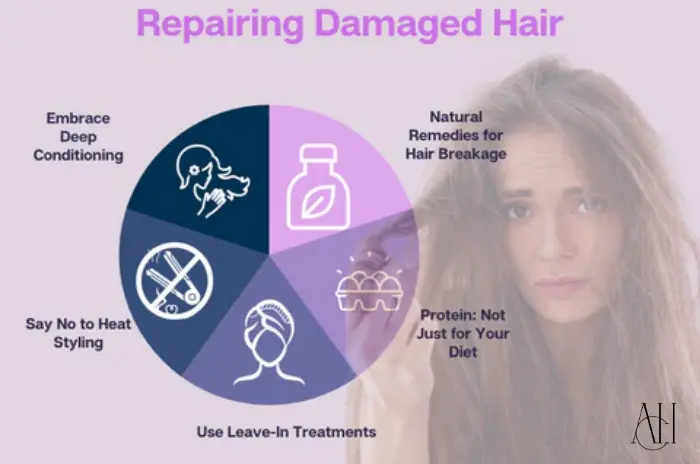
How to Repair and Prevent Hair Damage
1- Deep Conditioning Treatments for Recovery
Deep conditioning treatments provide intensive repair for damaged hair by penetrating deeper into the hair shaft than regular conditioners. These treatments contain concentrated proteins and moisturizing agents that can temporarily repair microscopic damage and improve hair’s overall condition.
Natural hair growth tips often emphasize the importance of maintaining scalp health through deep conditioning treatments that extend to the scalp area. A healthy scalp environment supports stronger hair growth and reduces the likelihood of breakage near the root.
Professional deep conditioning treatments can be performed monthly, while at-home treatments can be used weekly for severely damaged hair. The key is consistency and choosing treatments appropriate for your specific type of damage.
Protein treatments work best for hair that’s been chemically damaged or over-processed, while moisture-based treatments benefit hair that’s dry from environmental factors or heat styling. Understanding your hair’s specific needs ensures more effective treatment results.
2- Heat Protectants: A Must for Styling
Heat tool damage prevention relies heavily on quality heat protectant products that create a barrier between styling tools and hair strands. These products work by coating the hair shaft with protective ingredients that absorb and distribute heat more evenly.
Modern heat protectants offer protection up to specific temperature ranges, typically 400-450°F. Reading product labels and matching protection levels to your styling tool temperatures ensures adequate protection during heat styling sessions.
Application technique matters significantly for heat protectant effectiveness. Products should be applied to damp hair and distributed evenly from mid-length to ends, where hair is oldest and most vulnerable to damage.
Some heat protectants offer additional benefits like frizz control, shine enhancement, and humidity protection. Choosing multi-benefit products can streamline your routine while providing comprehensive protection against various types of hair damage.
3- Gentle Hair Tying Techniques
Hair breakage tips for styling include using softer materials like silk scrunchies, spiral hair ties, or fabric-covered elastic bands that create less friction and pulling on hair strands. These alternatives distribute tension more evenly and reduce the risk of breakage.
Rotating ponytail placement prevents concentrated damage in one area of the head. Alternating between high, mid, and low ponytails gives different sections of hair a break from tension and prevents the development of permanent weak spots.
Healthy hair care routine practices include loosening tight styles periodically throughout the day and completely removing hair ties before sleeping. This gives hair regular breaks from tension and allows for better circulation to the scalp.
Braiding techniques that start loosely at the roots and gradually tighten toward the ends distribute tension more naturally and reduce stress on the hairline and crown areas where traction alopecia most commonly occurs.
4- Optimal Washing Frequency for Your Hair Type
Hair care requirements vary significantly based on hair texture, scalp oil production, and lifestyle factors. Understanding your individual needs helps establish a washing routine that maintains cleanliness without over-stripping natural oils.
Oily hair types may require daily or every-other-day washing to maintain a fresh appearance, while dry or chemically treated hair often benefits from washing only 2-3 times per week. Over-washing hair can disrupt the natural balance regardless of hair type.
Healthy hair care routine schedules should account for environmental factors like humidity, exercise frequency, and product buildup. Active individuals may need more frequent washing, while those in dry climates might need less frequent cleansing.
Dry shampoo can extend time between washes for most hair types, but it shouldn’t completely replace regular cleansing. Buildup from dry shampoo and other styling products can contribute to scalp irritation and hair damage if not removed regularly.
5- DIY Natural Remedies for Stronger Hair
Natural hair growth tips include using ingredients like coconut oil, argan oil, and avocado for deep moisturizing treatments that can improve hair strength and flexibility. These natural ingredients provide nutrients that support hair health without harsh chemicals.
Poor diet and hair health are closely connected, making nutritional support through both diet and topical treatments important for hair recovery. Protein-rich treatments using ingredients like eggs or yogurt can provide temporary strengthening benefits for damaged hair.
Scalp massage with natural oils improves circulation and can support healthier hair growth while providing relaxation benefits. Regular massage also helps distribute natural oils along the hair shaft, improving overall hair condition.
Stress and hair loss connections make stress management an important component of hair health. Natural remedies that promote relaxation, such as aromatherapy treatments with essential oils, can support both hair health and overall well-being.
FAQ : Avoid These 10 Hair Care Mistakes to Prevent Damage
What are some of the most common everyday habits that damage hair?
The most common damaging hair habits include brushing wet hair, using excessive heat styling, wearing tight hairstyles regularly, over-washing hair, and skipping regular conditioning treatments.
Why is brushing wet hair considered damaging, and what’s the best way to detangle?
Brushing wet hair is damaging because wet hair is up to 30% more fragile and prone to breakage; the best approach is to use a wide-tooth comb starting from the ends and working upward gently.
How does frequent heat styling contribute to hair damage, and how can it be prevented?
Frequent heat styling breaks down hair proteins and weakens the hair structure; heat tool damage prevention involves using heat protectants, lower temperatures, and limiting styling frequency to 2-3 times per week.
Can wearing tight hairstyles really damage hair, and what are safer alternatives?
Yes, tight hairstyles harm hair through traction alopecia and constant tension; safer alternatives include loose styles, soft hair ties, and rotating ponytail placement regularly.
Is it possible to shampoo your hair too often, and what’s the ideal washing frequency?
Over-washing hair strips natural oils and can cause dryness and breakage; most hair types benefit from washing every 2-3 days rather than daily.
Why is using conditioner regularly so important, and what happens if you skip it?
Regular conditioner use smooths the hair cuticle, adds moisture, and provides protection; skipping it leads to increased tangling, breakage, and dull appearance.
How do hot water showers affect hair and scalp health?
Hot water hair washing effects include stripping natural oils, causing scalp irritation, and making hair more porous and prone to damage; lukewarm water is much gentler.
Besides these habits, what are other significant causes of severe hair damage, and how can they be remedied?
Other causes include chemical hair treatments, sun damage to hair, stress and hair loss, and poor diet and hair health; remedies involve protective products, stress management, proper nutrition, and professional treatment spacing.

